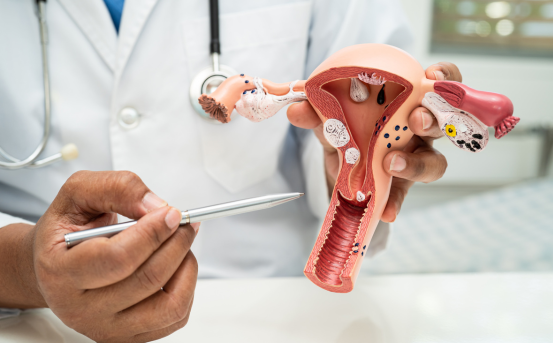Tubal ligation reversal surgery, commonly referred to as “getting your tubes tied,” is a permanent form of birth control for women. However, life circumstances can change. Many women who once opted for tubal ligation later consider having children again. In such cases, tubal ligation reversal becomes a potential option. But before undergoing the surgery, a thorough diagnosis and evaluation process is essential to determine if reversal is possible and likely to succeed.
Before a doctor can determine whether tubal ligation reversal is feasible or even advisable they must evaluate several critical factors. These include the method used in the original tubal ligation, the health and length of the remaining fallopian tubes, and the woman’s overall reproductive health. Diagnostic tests are used to gather this information and provide a clear picture of whether reversal surgery could offer a realistic chance of natural conception.
What Is Tubal Ligation Reversal?
Tubal ligation reversal is a surgical procedure that aims to restore fertility by reconnecting the fallopian tubes that were previously cut, tied, or sealed during tubal ligation. The success of this procedure largely depends on :-
-
The method used for the original tubal ligation
-
The remaining length and health of the fallopian tubes
-
The woman’s overall reproductive health
Not all women are suitable candidates for this surgery. This is where diagnostic testing and evaluation come in.
Who Should Consider Tubal Ligation Reversal Diagnosis?
Women who wish to conceive naturally after having had their tubes tied should undergo a comprehensive diagnostic assessment. Ideal candidates typically :-
-
Are under 40 years of age
-
Have good overall reproductive health
-
Had a tubal ligation that used clips or rings (which are easier to reverse)
-
Have a normal ovarian reserve and menstrual cycle
If you fall into one or more of these categories, your doctor may recommend a series of tests and evaluations to determine your eligibility for reversal surgery.
Initial Consultation: What to Expect?
Your journey begins with a detailed consultation with a gynecologist or fertility specialist. During this session, the doctor will :-
-
Take a complete medical history, including details of your tubal ligation
-
Ask about any history of pelvic infections, endometriosis, or surgeries
-
Evaluate your menstrual cycle patterns and any symptoms of hormonal imbalance
-
Review your partner’s fertility status, if applicable
This comprehensive evaluation helps to assess whether you’re a candidate for tubal ligation reversal or IVF (in vitro fertilization) may be a better option.
Essential Diagnosis for Tubal Ligation Reversal
Several diagnostic tests play a critical role in determining your suitability for diagnosis for tubal ligation reversal. These tests help doctors assess your reproductive anatomy, hormonal health, and the condition of your fallopian tubes.
Hysterosalpingography (HSG)
-
What it is :- An X-ray test that examines the shape and openness of the uterus and fallopian tubes.
-
Why it’s done :- It helps determine if there is any block or scarring in the tubes. After a tubal ligation, it’s important to know how much of the fallopian tube is left and whether it is functional.
-
Procedure :- A contrast dye is injected through the cervix, and X-rays are taken to track the flow through the uterus and tubes.
Laparoscopy
-
What it is:- A minimally invasive surgical procedure that uses a small camera to examine the pelvic organs.
-
Why it’s done:- It provides a direct visual assessment of the fallopian tubes, ovaries, and uterus. It helps identify any damage or adhesions caused by the previous surgery.
-
When recommended:- Usually done if the HSG results are unclear or if there are suspected pelvic abnormalities.
Tubal Operative Report Review
-
What it is :- Reviewing the surgical report of your original tubal ligation.
-
Why it’s done :- To understand the technique used for tubal ligation (clips, rings, burning, or complete removal). This directly impacts whether a reversal is technically possible.
-
Tip :- If available, obtain your original tubal ligation operative report from your hospital or surgeon for evaluation.
Hormonal Blood Tests
-
FSH (Follicle-Stimulating Hormone) :- High levels may indicate poor ovarian reserve.
-
AMH (Anti-Müllerian Hormone) :- Reflects the number of viable eggs remaining in the ovaries.
-
Estradiol and LH :- Provide additional insights into ovarian function.
These tests help assess your ovarian reserve, which is crucial for determining fertility potential after reversal surgery.
Pelvic Ultrasound
-
What it is :- A non-invasive imaging test using sound waves to visualize reproductive organs.
-
Why it’s done :- To assess the uterus for fibroids, cysts, or abnormalities and evaluate the health of the ovaries.
Factors That Influence Diagnostic Outcome
The diagnosis isn’t just about determining if your tubes are open it’s about evaluating the entire reproductive system’s readiness for pregnancy. Factors that can influence the diagnostic outcome include:
-
Age :- Women under 35 tend to have better success rates with reversal.
-
Tubal Length Post-Ligation :- At least 4 cm of healthy fallopian tube is often necessary for successful reconnection.
-
Type of Tubal Ligation :- Reversal is more likely if clips or rings were used rather than cauterization or complete removal.
-
Presence of Scar Tissue or Adhesions :- Can affect tubal mobility and success of surgery.
-
Partner’s Sperm Quality :- Male factor infertility should be ruled out through a semen analysis.
How the Diagnosis Impacts Surgical Decision-Making
After completing all diagnostic evaluations, your fertility specialist will use the results to determine :-
-
If you are a good candidate for tubal reversal
-
Whether the procedure is technically feasible
-
The chances of natural conception post-reversal
-
Whether IVF may be a more viable option
In some cases, despite a strong desire to undergo reversal, IVF might offer higher success rates, especially in older women or those with damaged tubes.
Conclusion
A detailed diagnostic evaluation is the foundation of a successful tubal ligation reversal. Without it, there’s no way to accurately predict surgical feasibility or chances of conception. From imaging tests and blood work to reviewing your original surgical method, every diagnostic step provides vital insight.























